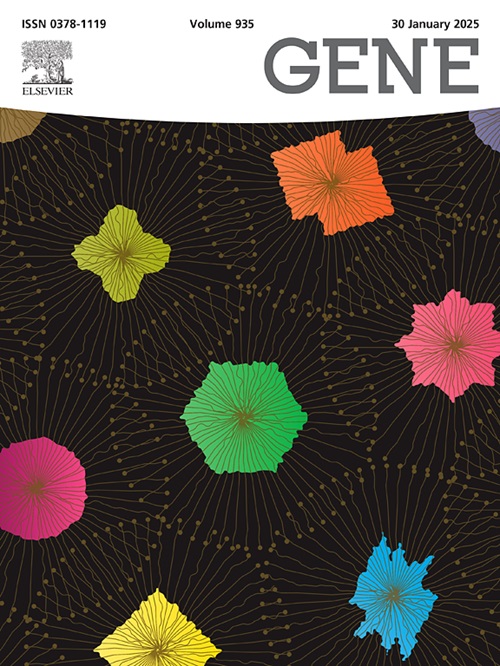Comparative transcriptome analysis reveals key genes responsible for the differences in polyphyllin composition in two Paris polyphylla species
IF 2.6
3区 生物学
Q2 GENETICS & HEREDITY
引用次数: 0
Abstract
Paris polyphylla biosynthesizes significant quantities of polyphyllins, which exhibit numerous pharmacological activities and have become vital components in many patented drugs. However, only two species in this genus are officially recognized as medicinal sources due to their high levels of bioactive compounds. In this study, we measured and compared the total saponin content in Paris forrestii and Paris polyphylla var. yunnanensis The content in Paris forrestii was nearly double that in Paris polyphylla var. yunnanensis, and polyphyllin V and gracillin, hardly detectable in Paris polyphylla var. yunnanensis, were the primary saponins in Paris forrestii. To elucidate the genetic mechanisms underlying the differences in saponin content between the two species, transcriptome sequencing was conducted, and the correlation between saponin content and the expression of genes involved in polyphyllin biosynthesis was analyzed. Differential expression of functional genes associated with terpenoid backbone biosynthesis and steroid biosynthesis was identified as a potential cause of the variation in polyphyllin V and gracillin levels. Screening the transcriptomics data led to the identification of two rhamnolipid glycosyltransferases, PpUGT91T1 and PpUGT91T2, whose expression levels were found to be highly correlated with polyphyllin II content. Subsequent functional validation demonstrated that PpUGTs catalyze the conversion of polyphyllin V to polyphyllin III, acting as polyphyllin V C′-4-O-rhamnosyltransferases. Additionally, polyphyllin II was derived from the extension of the polyphyllin III sugar chain with rhamnose. Key amino acid residues involved in sugar donor and acceptor recognition were predicted using molecular docking, providing a theoretical framework for the biosynthesis of polyphyllins.
求助全文
约1分钟内获得全文
求助全文
来源期刊

Gene
生物-遗传学
CiteScore
6.10
自引率
2.90%
发文量
718
审稿时长
42 days
期刊介绍:
Gene publishes papers that focus on the regulation, expression, function and evolution of genes in all biological contexts, including all prokaryotic and eukaryotic organisms, as well as viruses.
 求助内容:
求助内容: 应助结果提醒方式:
应助结果提醒方式:


